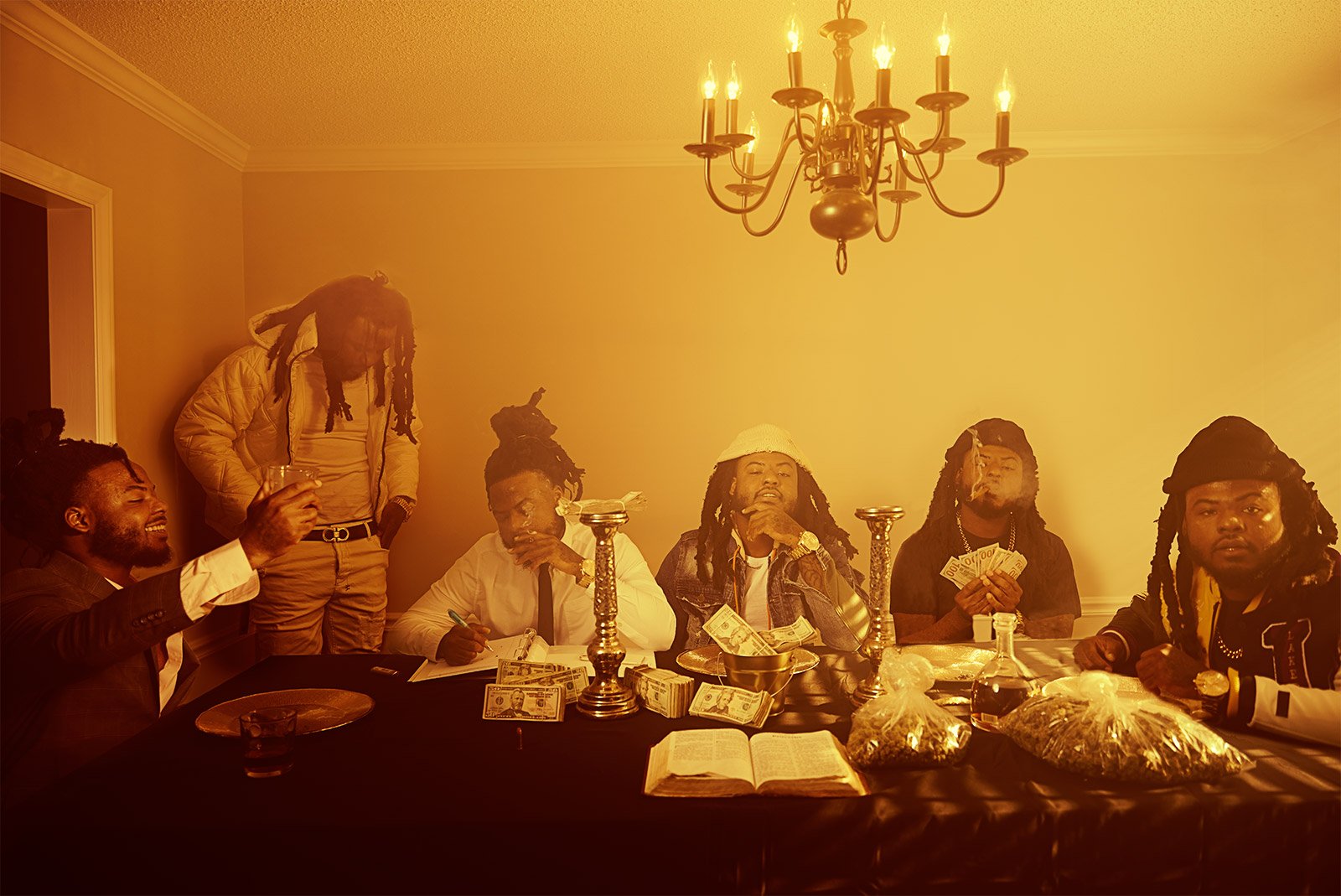Mastering the Art of Composite Images: The Making of a Last Supper Album Cover
Creating a composite image can be a challenging but rewarding process. As a photographer, you may be asked to create a composite image for a client's project, just like I was hired to do for an artist's album cover. In this case, the artist wanted to recreate the iconic scene of The Last Supper with himself in 6 different personas at the table.
When working with an artist, it's important to understand that you may not always have full creative control. In this case, I had no control over the vision, lighting, props, or wardrobe. Initially, I had an elaborate lighting setup planned out with color gels, but the client didn't like it when they saw the images on the back of my camera. Despite feeling crushed, I asked the client what they wanted, and they requested images without color gels, which was surprising because they had initially said they loved that about my work. I adjusted my lighting accordingly, and while the resulting images felt flat to me, the client loved them, and ultimately, that's what mattered.
When creating a composite image, the first step is to put your camera on a tripod. This isn't an absolute requirement, but it makes the post-production process much easier. A tripod allows you to easily align multiple images in post-production, which is crucial for creating a seamless composite image. It also helps you frame your shot and figure out what should or should not be in the frame.
Another important step is to get a plate shot, which is an image where the background and foreground are captured without the main subject in the image. This allows you to easily bring in elements into the image that may have been overlapped by the subject, without having to recreate those elements from scratch in post-production.
plate image
get a plate image without the main subject in the image
It's also important to avoid having the subject overlap with themselves in different positions, as this can make bringing the elements together in post-production difficult. In my case, I had one image where the subject's elbow was blocking another part of the image, and it took some work to fix it.
Once the images are captured, the next step is post-production. The client selected the images they wanted to appear in the final composite, and the goal was to edit the raw images to have a similar look in terms of exposure, color, and other elements. This makes the composite process easier. In my case, some of the images didn't have the same look, so I had to do some additional work in Photoshop.
To create the composite image, I created a rough draft of what the final image could look like. This allowed me to quickly visualize if it would work and what elements needed to be fixed in terms of lighting, shadow, color, and more.
ROUGH DRAFT
Creating a composite image can be a challenging but rewarding process, and it's important to communicate effectively with your client to ensure that their vision is realized. While you may not always have full creative control, you can use your expertise and experience to create a stunning image that exceeds your client's expectations.
As a photographer, I've faced my fair share of creative roadblocks during photo sessions. In this particular session, my artistic vision didn't align with the client's initial expectations. I was excited to experiment with gel/color photography, but the client wasn't initially keen on the idea. Despite this initial setback, I decided to keep pushing forward with my vision and tried capturing some gel images towards the end of the session.
To my delight, the client ended up loving these images. It was a reminder that as photographers, our job is to capture the essence of our subject in the best possible way, and that sometimes the best shots come from unexpected places. I learned that it's crucial to be flexible and adaptable during a photo session, and to never give up on our vision just because it doesn't align with our client's initial expectations. Instead, we should keep pushing forward, keep experimenting, and keep trying new things until we find something that truly resonates with us and our clients.
This experience taught me that our perseverance and determination will pay off in the end, and that we'll end up with stunning, unique images that our clients will love and cherish for years to come. As photographers, our creativity is what sets us apart from the rest - so we should embrace it and never give up on our vision! Remember, sometimes the best shots come from taking risks and trying something new. Trust in your vision and keep pushing the boundaries of your creativity.
If you're looking for a photographer who will capture your essence and put you at ease, I'm here to help. With a unique approach to capturing images that blends traditional poses with elements of cinematography, I create stunning images that convey a story and evoke strong emotions. Contact me today to learn more about how I can help you bring your vision to life.
And if you found this blog post helpful, please share it with others who may find it useful.





